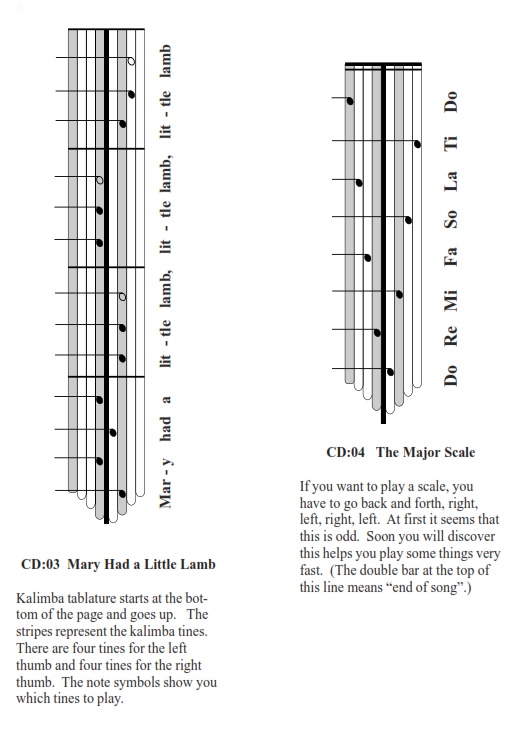
Use of this website constitutes acceptance of the Privacy Policy and User Agreement. Copyright © 2020 Kalimba Magic. All Rights Reserved.
When Hugh Tracey recorded and studied every kalimba he could find in southern Africa, he discovered roughly 40% of the kalimbas had the pentatonic scale (5 notes per octave), 40% were hexatonic (6 note), and 20% were like our modern scales, heptatonic (7 note). The 8-note kalimba, in its standard tuning, actually has only 7 unique notes per octave, and the top note is the same as the bottom note, but is an octave higher.
Can you say “Do Re Mi Fa So La Ti Do”?
It turns out that there is a lot of music you can play on an 8-note kalimba in such a tuning.
The 8-Note Kalimba is a great place for children and adult beginners to begin their kalimba journey. The 8-Note Kalimbas tend to be not so expensive, and they actually teach you songs that can be easily translated to the 15-note Alto kalimba or the 12-Note kalimbas when your kalimba player outgrows their 8-Note instruments.
To give you a hint of the power of the simple 8-note kalimba, I invite you to take a peek at the table of contents of my 10-year old book, “The Best Ever Book of 8-Note Kalimba Music.” Remarkably, nobody has ever challenged the title of the book, at least not to me. It greatly exceeds the breadth and depth of any instructional material I have ever seen for the 8-Note kalimba, and so it (still) lives up to its title.

This book uses the powerful kalimba tablature, which can be very simple, as it is in the two elementary examples below. However, the tablature is also general enough to convey melody, harmony, and counterpoint – that is, complex music, which amazingly enough, can be made on the 8-Note kalimba.

Stay tuned – in the future we’ll be sharing other tips on the 8-Note kalimba, as well as tips for many other kalimbas out there. Remember, my job is to help you get the most out of your kalimba experience. I do want it to be magical, and I can help make that happen.
The media player below gives you an idea of what you can do with the 8-Note Kalimba.


Sign up for our newsletter and free resources with your email address:
We pinky promise not to spam you and to only send good stuff.
 Assist Paul Tracey Rebuild His House in Pacific Palisades
Assist Paul Tracey Rebuild His House in Pacific Palisades 8-Note Spiral Kalimba Turned into a Student Karimba
8-Note Spiral Kalimba Turned into a Student Karimba Seek to Infuse Your Musical Moments With Beauty and Magic
Seek to Infuse Your Musical Moments With Beauty and MagicUse of this website constitutes acceptance of the Privacy Policy and User Agreement. Copyright © 2020 Kalimba Magic. All Rights Reserved.